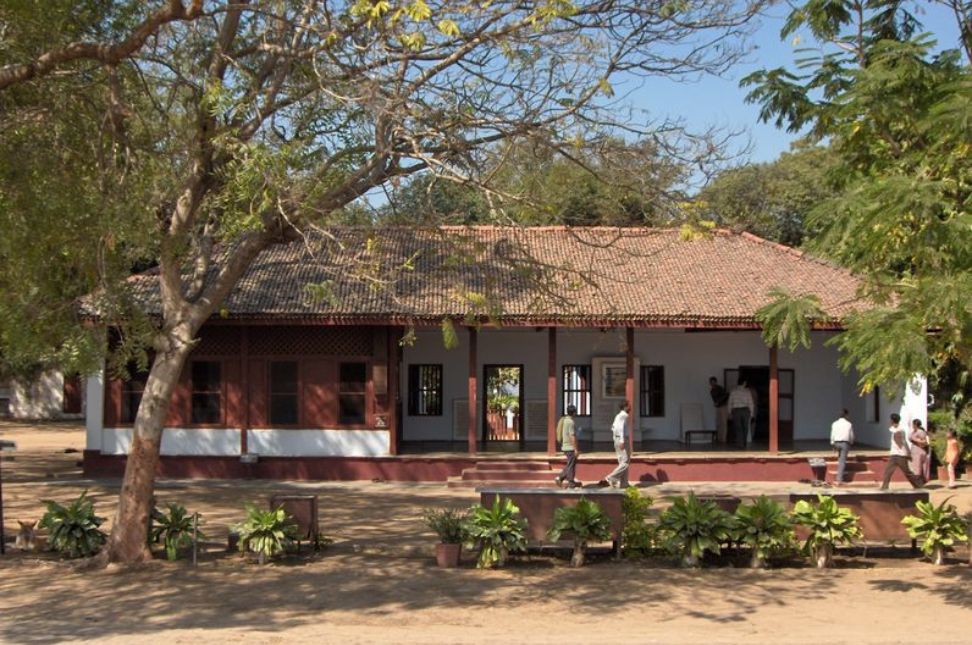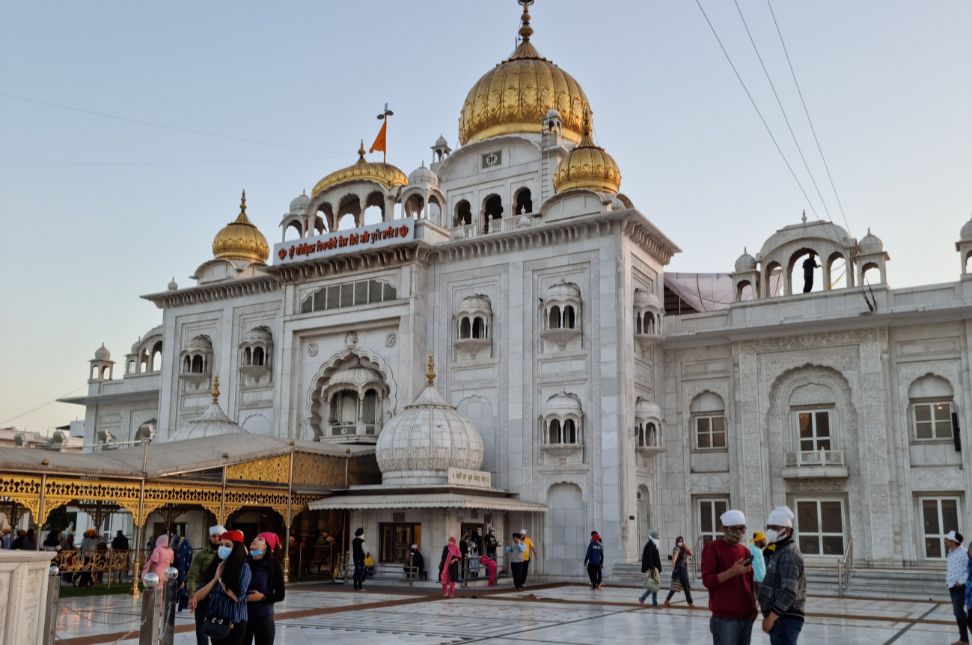The Sabarmati Ashram, located on the banks of the Sabarmati River in Ahmedabad, Gujarat, is one of India’s most important historical landmarks. This site played a pivotal role in the Indian freedom struggle and was the home of Mahatma Gandhi for over a decade. A visit to the Sabarmati Ashram offers a deep dive into the life and philosophy of Gandhi, a leader who not only inspired the Indian independence movement but also left a lasting impact on global civil rights efforts.
The Origins of Sabarmati Ashram
The Sabarmati Ashram was founded in 1917 by Mahatma Gandhi after his return from South Africa, where he had developed his philosophy of non-violence and civil disobedience. Gandhi wanted a place where he could work on self-sustenance, truth, and non-violence. Initially known as the Satyagraha Ashram, it was later renamed after its location by the Sabarmati River. Gandhi believed that the ashram’s location, midway between a jail and a crematorium, symbolized the inevitable sacrifices that come with striving for truth and justice.
During his stay at the Sabarmati Ashram, Gandhi led numerous campaigns for India’s freedom, most notably the Dandi March, which started from this very site. The ashram served as the nerve center of Gandhi’s activities, where he practiced and preached his ideas of simplicity, non-violence, and truth.
A Walk Through Sabarmati Ashram
When you step into the Sabarmati Ashram, you are stepping into history. The ashram is now a museum, and its exhibits offer a glimpse into Gandhi’s life, his principles, and the role he played in shaping modern India.

- Hriday Kunj: One of the most significant spots in the Sabarmati Ashram is Hriday Kunj, Gandhi’s humble living quarters. The simplicity of Hriday Kunj reflects Gandhi’s life. The room is preserved exactly as it was during his time, with items like his spinning wheel (charkha), writing desk, and walking stick on display. This spot holds deep emotional significance for many visitors, as it was from here that Gandhi orchestrated several key movements that shaped the nation’s destiny.
- Gandhi Memorial Museum: The museum houses numerous letters, photographs, and personal items of Mahatma Gandhi. Visitors can see letters he exchanged with prominent figures such as Leo Tolstoy, Albert Einstein, and Tagore. The museum also features photographs that document key moments in the Indian freedom movement, making it a deeply immersive experience for history enthusiasts.
- Vinoba-Mira Kutir: Named after Vinoba Bhave and Miraben (a British follower of Gandhi), this cottage was used by both during their time at the Sabarmati Ashram. It further highlights the impact of Gandhi’s teachings on people from different backgrounds and cultures.
- Upasana Mandir: This open-air prayer ground is where Gandhi and his followers would gather for daily prayers. Gandhi believed in the power of collective spiritual reflection, and Upasana Mandir remains a serene place where visitors can sit, meditate, and feel the presence of the past.
- Magan Niwas: This is the residence of Maganlal Gandhi, who was the ashram’s manager and Gandhi’s close associate. He helped develop the spinning wheel, which became a symbol of India’s struggle for independence and self-reliance. Visitors can see replicas of the early spinning wheels here.
The Significance of Sabarmati Ashram in India’s Freedom Struggle
The Sabarmati Ashram is perhaps most famous for being the starting point of the Dandi March, one of the most iconic events in India’s freedom movement. On March 12, 1930, Mahatma Gandhi set out from the ashram with 78 followers on a 240-mile march to the coastal village of Dandi. The purpose of the march was to protest the British monopoly on salt production, and it was a direct act of civil disobedience against colonial rule.
The Dandi March resonated deeply with people across India, sparking similar protests nationwide and becoming a turning point in the independence struggle. Gandhi vowed that he would not return to the Sabarmati Ashram until India achieved independence, a promise he kept. India gained freedom in 1947, but Gandhi never returned to live at the ashram.
Gandhi’s Philosophy at Sabarmati Ashram
The Sabarmati Ashram was not just a place of residence for Gandhi—it was a living experiment in his philosophy of simple living, self-reliance, and non-violence. He believed in the power of community and set up activities that reflected this, such as farming, weaving, and animal husbandry.
The charkha (spinning wheel) became the symbol of self-reliance, as Gandhi encouraged Indians to spin their own cloth (khadi) instead of relying on British textiles. This simple act of weaving became a form of protest, and it was at the Sabarmati Ashram where Gandhi actively promoted the idea of Swadeshi, the use of goods made in one’s own country.
Non-violence, or Ahimsa, was central to Gandhi’s beliefs, and he practiced it throughout his life. The ashram served as a training ground for those who wanted to participate in the freedom movement but were committed to doing so peacefully.
Sabarmati Ashram Today: A Place of Learning and Reflection
Today, the Sabarmati Ashram is a place of learning and reflection. It attracts visitors from all over the world who are interested in understanding Gandhi’s philosophy and its relevance in the modern world. The ashram is a reminder of the power of truth and non-violence, concepts that continue to inspire social movements worldwide.

The museum at the ashram conducts educational programs and workshops that focus on Gandhi’s teachings. These programs are designed to educate the younger generation on the importance of non-violence, self-reliance, and truth in addressing modern-day issues like inequality, injustice, and environmental degradation.
How to Visit Sabarmati Ashram
The Sabarmati Ashram is easily accessible from Ahmedabad, which is well-connected by air, rail, and road. Sardar Vallabhbhai Patel International Airport, located in Ahmedabad, offers flights to and from major cities in India and abroad.
- By Air: Visitors can fly into Sardar Vallabhbhai Patel International Airport, which is approximately 10 kilometers from the ashram.
- By Rail: Ahmedabad Railway Station is well-connected to major cities in India. From the station, the ashram is a short drive away.
- By Road: The Sabarmati Ashram is easily accessible by road, with regular bus services and taxis available from the city center.
Best Time to Visit
The best time to visit the Sabarmati Ashram is between October and March, when the weather is pleasant. During this period, the city of Ahmedabad experiences mild temperatures, making it ideal for sightseeing. Summers in Ahmedabad can be extremely hot, with temperatures soaring above 40°C, so it is advisable to avoid visiting during this time.
Conclusion
The Sabarmati Ashram is not just a historical site but a living testament to Gandhi’s principles and legacy. It offers a unique opportunity to connect with the life and ideas of one of the most influential figures in modern history. Whether you are interested in India’s freedom struggle, Gandhi’s philosophy, or simply wish to experience a place of tranquility and reflection, the Sabarmati Ashram provides a deeply enriching experience.
For visitors from Tier 1 countries like the US, UK, Canada, and Australia, the Sabarmati Ashram offers a profound insight into the values of truth, simplicity, and non-violence—principles that are universally relevant. As a place of great historical and cultural significance, the Sabarmati Ashram continues to inspire millions worldwide.




